#american paddlefish
Text
Easily my most popular post was about paddlefish, so this Wet Beast Wednesday it's time to give them their moment in the sun. Paddlefish are members of the family Polyodontidae and one of only two surviving members of the order Acipenseriformes, the other being sturgeons. The Acipenseriformes are one of the oldest lineages of ray-finned fish and diverged from the ancestors of all other modern ray-finned fish around 300 millions years ago. While paddlefish have been around since the Cretaceous period, there is only one living species, the American paddlefish (Polyodon spathula). Another modern species is the Chinese paddlefish (Psephurus gladius), but the last sighting of one was in 2003 and they were officially declared extinct in 2022. In this post, unless I specify otherwise everything I say will be referring to the American paddlefish.

(image: either an American paddlefish or a basking shark that got its nose caught in a hydraulic press)
Paddlefish are named for their very long rostrums which are packed full of electrorecepting organs called the ampullae of Lorenzini used to sense electric fiends in the water. The ampullae are not only on the rostrum, but also on the head and large skin flaps that extend from the operculum (gill cover). They are so sensitive that paddlefish are able to sense the movement of individual body parts of zooplankton. Paddlefish use their rostrums to detect their prey, which consists almost entirely of zooplankton. They are ream suspension feeders, swimming toward swarms of zooplankton with their mouths open. As the water passes through the gills, gill rakers filter out the zooplankton, which is then swallowed. Other fish that use this feeding method include basking sharks. While the rostrum is the primary method of prey detection, other ampullae on the head and operculum flap allow the fish to still effectively find food even if the rostrum is damaged or destroyed. When working fish fish on the Mississippi I caught multiple paddlefish who lost their rostrums to propeller strikes and were still doing fine. Electroreception is their main sense, with their eyesight being extremely poor.

(image: the skeletal structure of the rostrum)
As chordates, paddlefish have a notochord that runs from the head down the body. In most modern chordates, the notochord is only present in the embryo and is lost during development. This is not the case for paddlefish, who retain their notochord into adulthood, where is acts as a soft spine. While paddlefish (and their sturgeon cousins) are bony fish, they have lost most of the bone and now have skeletons composed almost entirely of cartilage. It is for this reason that early taxonomists initially miscategorized paddlefish as freshwater sharks. To be fair, they do look a lot like miniature basking sharks. Who crossbred with spoons. They also lost their scales and have smooth, easily damaged skin instead. Their skin is so easily damaged that just being caught in nets can leave scars. Paddlefish are large and long-lived. The American species reaches an average of 1.5 m (5 ft) in length, with the rostrum making up a third of that, and a weight of 27 kg (60 lbs). The largest recorded specimen was 2.16 m (7 ft 1 in) and an estimated 90 kg (198 lbs). Despite being one of the largest American freshwater fish, they paled in comparison to the Chinese species, which could reach 3 m (9.8 ft) and 500 kg (1,100 lbs). The largest Chinese paddlefish on record was 7 m (23 ft) long and was estimated to weigh "a few thousand pounds". The Chinese paddlefish also preferred larger prey, feeding largely on small fish and crustaceans. American paddlefish live an average of 5 to 8 years, but in the right circumstances can live up to 60 years, with females generally living longer. The Chinese paddlefish had an estimated average lifespan of 29-38 years. In both species, it is believed that human activity drastically reduced their average lifespans.
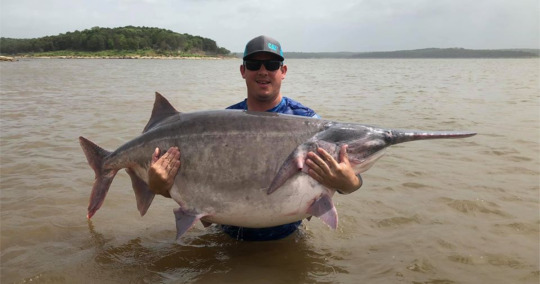
(image: an absolute unit of an American paddlefish)
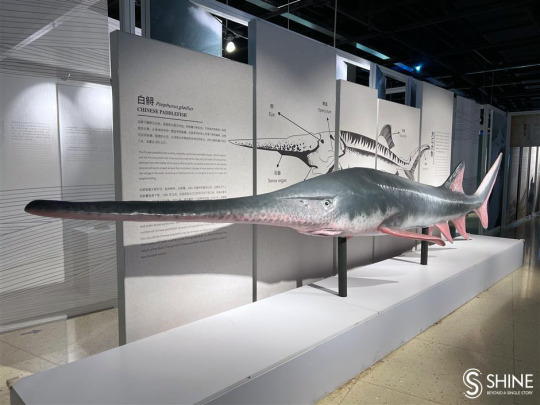
(image: a reconstruction of a Chinese paddlefish from the Shanghai Science and Technology Museum)
Paddlefish travel upriver to spawn in spring. They prefer to span on shallow gravel bars that would be exposed to air if not for spring rainfall and snow melt. Because they require very specific conditions to spawn, spawning rarely occurs every year. Every 4-5 years is more common. Paddlefish are broadcast spawners, with both males and females releasing gametes into the water column. Fertilized eggs are negatively buoyant and sticky. They will sink to the bottom and stick to the gravel. Once hatched, larvae will be swept down river to develop in deep pools. They are born without rostrums, which start to grow almost immediately. Paddlefish mature late, with females becoming sexually mature between 7 and 10 years of age, with a few not maturing until as late as 16-18 years. Human activity is resulting in many individuals dying before becoming sexually mature. American paddlefish are cross-fertile with the Russian sturgeon (Acipenser gueldenstaedtii), producing a hybrid offspring known as the sturddlefish despite being separated by the Atlantic ocean and 184 million years of evolution. This was discovered by accident when scientists introduced paddlefish sperm too sturgeon eggs as a control group for an experiment. I made a post on the sturddlefish which you can read here.

(image: three larval paddlefish of different ages)
American paddlefish are classified as vulnerable by the IUCN. They are native to the Mississippi river basin that encompasses much of the midwest and south of the United States, but their range used to be larger, reaching into Lake Huron, the Northeastern U.S. and parts of Canada. This reduction of native range is due largely to human activity, mostly overfishing and habitat loss. Zebra mussels, an invasive species, are a major competition for paddlefish as theybith feed on zooplankton. Reintroduction programs have begun in some of the states they were extirpated from, and they have been introduced to China, Cuba, and multiple countries in Europe for use in fishing and caviar production. 13 states allow for sport fishing of paddlefish, some of them relying on restocking to maintain a population for anglers. Paddlefish meat is edible and their eggs can be used for caviar. Paddlefish can be raised in captivity, but must will not spawn in captivity and so establishing captive populations requires gonad extraction and artificial insemination. Poaching of wild paddlefish for their eggs is an ongoing problem. The extinction of the Chinese paddlefish is believed to be the result of overexploitation and habitat loss.
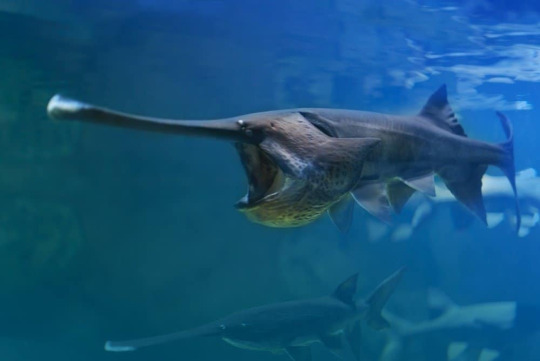
(image: a paddlefish with its mouth open)
#wet beast wednesday#biology#zoology#fish#ecology#fishblr#freshwater biology#freshwater fish#aquatic biology#paddlefish#american paddlefish#chinese paddlefish#animal facts
518 notes
·
View notes
Text
sturddlefish weren't supposed to exist. they were supposed to be infertile eggs but instead they hatched?? the last common ancestor between surgeon and paddlefish was 180 million years ago- that's like trying to cross a modern human with a platypus (common ancestor ~170 million years ago). it shouldn't have worked
and because the sturddlefish weren't really genetically all there (many of the eggs didn't make it very far into the development) the ones that hatched looked very different from one another

source: wikimedia
specifically, it was a cross between the Russian Sturgeon and the American Paddlefish. if you're thinking "they're both fish though" I need you to remember that "fish" is a SHAPE. just like "tree" and "crab" and "ferret" are shapes. except things have been living in the water much, much longer than they've been living on land, so "fish" have had even longer to evolve away from each other. the last time their common ancestor existed, humans and platypi hadn't even branched off from each other
#sturddlefish#american paddlefish#russian sturgeon#fishblr#ichthyology#living mistake#scienceblr#platypus
164 notes
·
View notes
Text
AMERICAN PADDLEFISH
ALSO KNOWN AS THE MISSISSIPPI PADDLEFISH
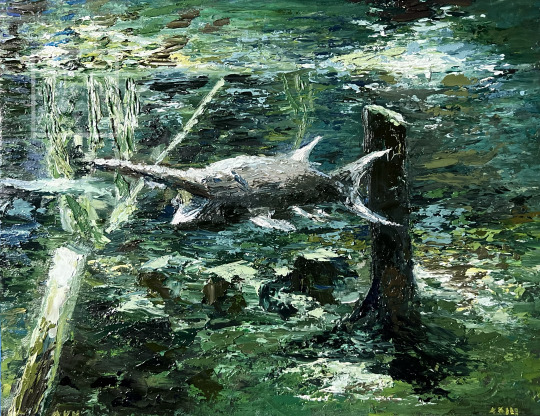
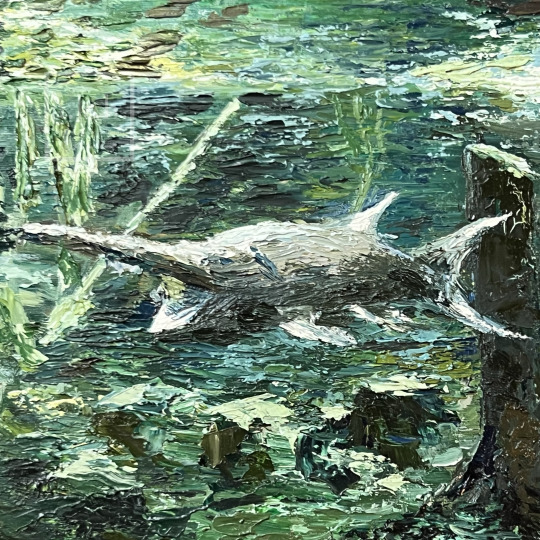

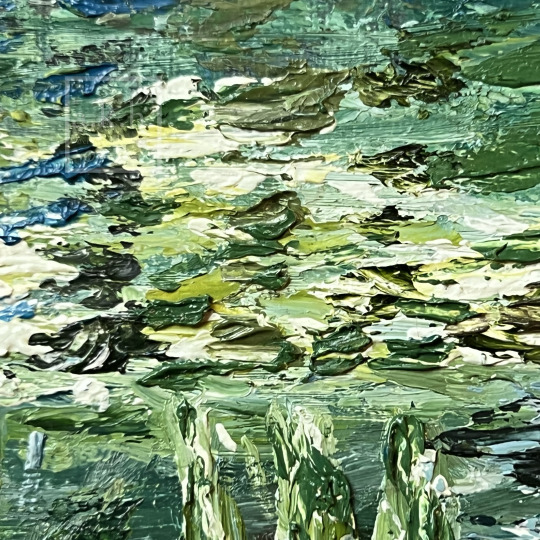



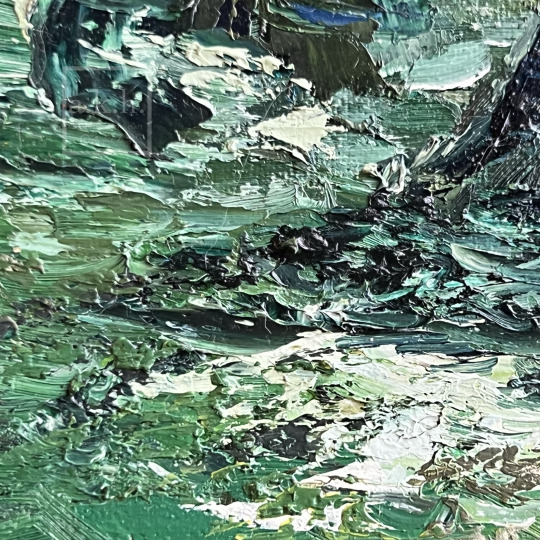

it’s national american paddlefish day :) so have some upclose photos of my painting “Mississippi paddlefish”, oil on canvas board, 2023.
ko-fi | patreon | website
#art#painting#artists on tumblr#oil painting#fish#fishblr#freshwater fish#freshwater#fish painting#fish art#American paddlefish#Paddlefish#🖤 art tag
51 notes
·
View notes
Text
Daily fish fact #333
Paddlefish
Paddlefish!
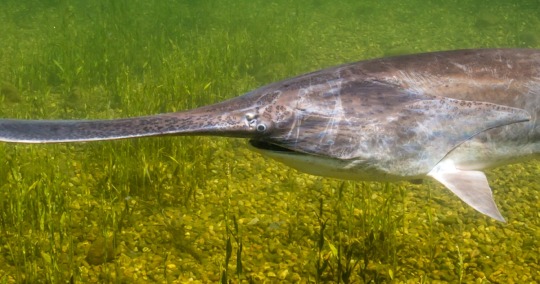
They use their big rostrum (snout) for detecting prey! Their snout is filled with electroreceptors, which can sense electricity produced by living beings.
235 notes
·
View notes
Text
Critter fact #54:

The American paddlefish (Polyodon spathula) and the Russian sturgeon (Acipenser gueldenstaedtii) can hybridize. These hybrids, discovered accidentally, are called sturddlefish. In the below photo, the Russian sturgeon is a, the American paddlefish is d, and the hybrids are b and c.
#American paddlefish#Russian sturgeon#Polyodon spathula#Acipenser gueldenstaedtii#Sturddlefish#Fish#fish facts#Hybrid#critter facts
18 notes
·
View notes
Text
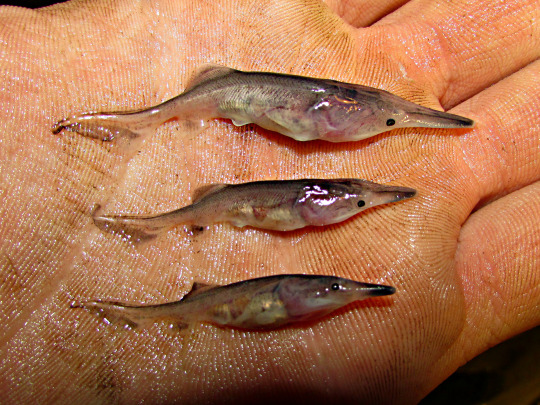
I thought my audience needed to know about this image on the American Paddlefish Wikipedia article
6 notes
·
View notes
Text
American Paddlefish Caviar is Making Waves in Gourmet Circles
The ascent of American Paddlefish Caviar in gourmet circles is more than just a fleeting trend. Sustainability, taste, and innovation are all part of the evolving nature of global gastronomy. Contact us today!
0 notes
Text
Hey. You.
Check out this weird fish.

Cool, huh? It's got no bones and it's older than T rex. Wanna learn more? Check out Consider Nature:
#animals#science#biology#nature#conservation#wildlife#environment#fish#fishing#ecology#considernature
5K notes
·
View notes
Text
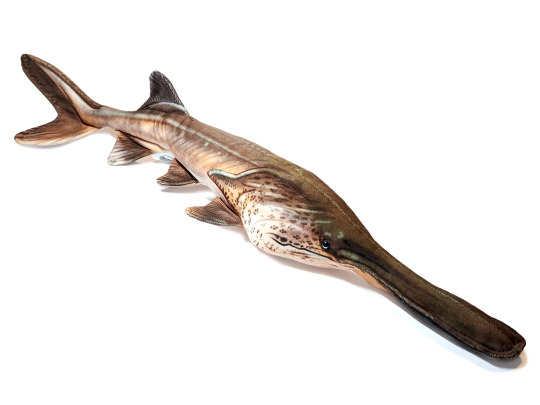
American Paddlefish!! New plush!
I'll try and keep them away from my sturgeons but... honestly a Sturddlefish might be a cool plush to make!
You can find 'em for sale over here; https://www.palaeoplushies.com/shop/paddlefish
367 notes
·
View notes
Text
Gather round, children, and let me tell you the tale of the sturddlefish. In the year 2019 in the mythical land of Hungary’s Research Institute for Fisheries and Aquaculture, some scientists were trying to save some endangered fish. The Russian sturgeon and American paddlefish are distantly related species that are both endangered. The scientists were trying to induce gynogenesis in the sturgeon.
This is a type of parthenogenesis (single parent reproduction) where sperm triggers the embryo growth, but doesn’t contribute genetic material. In any type of parthenogenesis, the offspring is basically a clone of the mother.
The scientists needed to have sperm interact with the eggs without inseminating them. So they used paddlefish sperm. Since paddlefish diverged from sturgeons 184 million years ago, the scientists figured that there was no chance of insemination.
Much to their surprise, the paddlefish sperm did fertilize the sturgeon eggs, creating the hybrid sturddlefish. This was not expected at all due to his distantly related the parent species are. There were two sturddlefish populations from the same breeding. One that was 50% sturgeon and paddlefish and one that had twice as much sturgeon due to chromosome doubling. Only about 2/3 of the sturddlefish survived longer than a month and only about 100 survived past a year. Hybrids often have health problems that limit their lifespans. Given how long-lived the parent species are, a healthy sturddlefish could live for a long time.
The sturddlefish will live out their lives in the research institute and the scientists have no plans of making more. I don’t know if any of them are still alive. For a brief time, a new lifeform will have come into existence by sheer accident and will soon be extinct. May they Rest In Peace
Image from a to d: Russian sturgeon, mostly sturgeon hybrid, even hybrid, American paddlefish

5K notes
·
View notes
Note
Do you have any cool facts about Missouri wildlife?
I'd love to share something with my Midwestern friends, and thank you for always updating this blog!
I don't know if i have any Missouri animal facts per se... but I can share some of the state symbols with everyone.
We moved around a lot when we first came to the U.S. and we lived briefly in Kansas City. I have great memories of going to the Ozarks at Christmas time (near Lake of the Ozarks). I specifically remember following woodpeckers and deer around the forest in the snow.
SOME MISSOURI STATE SYMBOLS:
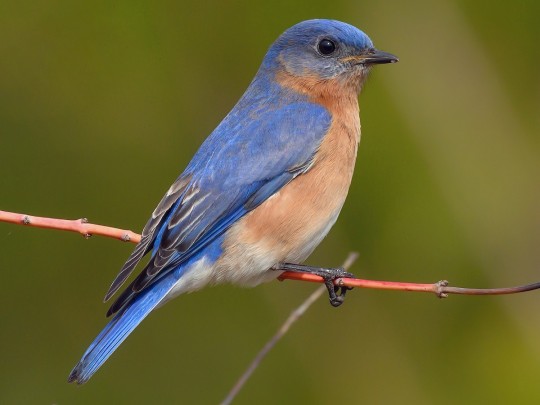
STATE BIRD: Eastern Bluebird (Sialia sialis), family Turdidae, order Passeriformes, found across much of the central and Eastern U.S., SE Canada, and NW Mexico
Changes in land use lead to drastic declines in Eastern Bluebirds after the early 1900s. They have recovered in many places, due to "bluebird trails", reestablishing appropriate habitat and nest box campaigns for public and private property.
Find out more: NestWatch | Eastern Bluebird - NestWatch
Blue birds are in the thrush family, Turdidae, along with American Robins.
They eat mainly worms, insects, and other small invertebrates (but also take berries for part of the year).
Bluebirds are cavity nesters, nesting in tree holes usually, but will readily take to properly constructed and placed nest boxes.
Males (pictured) are brighter blue, and females are a more muted and faded blue or bluish gray.
photograph by Keith Kennedy

STATE AQUATIC ANIMAL: American Paddlefish (Polyodon spathula), family Polyodontidae, order Acipenseriformes, found in various parts of the Mississippi River basin
This species is the only member of this family that still exists. They are most closely related to sturgeons. This order, Acipenseriformes, is considered one of the most evolutionarily primitive groups of ray finned fishes.
They do not have scales, and their skeleton is mostly cartilaginous.
They are filter feeders. Their heads and rostrums are covered with thousands of sensory receptors, which help them locate zooplankton swarms.
They are considered "vulnerable" due to overfishing, habitat degradation and destruction, and pollution.
photograph via: US Fish & Wildlife Service
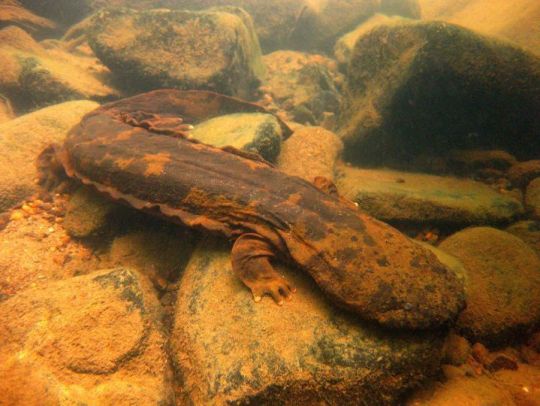
STATE ENDANGERED ANIMAL: Eastern Hellbender (Cryptobranchus alleganiensis), family Cryptobranchidae, eastern United States
The largest salamander in the Americas, it grows to a total maximum length of up to 40 cm (15.7 in).
Though nationally it is considered to be just "vulnerable", in some states (like Missouri), it is "endangered".
photograph by Mark Tegges

STATE REPTILE: Three-toed Box Turtle (Terrapene triunguis), family Emydidae, found in the South-central and Southeastern U.S.
This specie shas been considered to be a subspecies of the Eastern Box Turtle, T. carolina (and still is by some herpetologists).
These turtles are terrestrial, but are not closely related to tortoises. They are in the same family as aquatic sliders, pond turtles, cooters, map turtles, and painted turtles.
photograph by Noppadol Paothong
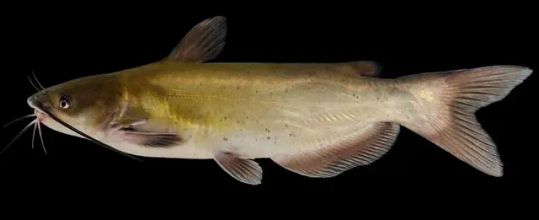
STATE FISH: Channel Catfish (Ictalurus punctatus), family Ictaluridae, order Siluriformes, found in freshwater habitats in the eastern and southern US, southern Canada, and northern Mexico
They are widely caught, and have been introduced into waterways in other parts of North America and around the world. (In some places they are considered an invasive species).
photograph via: Missouri Dept. of Conservation

photograph by Brian.gratwicke
#Acipenseriformes#paddlefish#fish#ichthyology#box turtle turtle reptile#herpetology#bluebird#thrush#bird#ornithology#north america#hellbender#salamander#amphibian#animals#nature#catfish
177 notes
·
View notes
Text

daily painting - 03/09/2024
American Paddlefish
100 notes
·
View notes
Text
Daily fish fact #173
Paddlefish!

The only non-extinct species of paddlefish is the American paddlefish. They have no teeth and mainly feed on zooplankton by filter feeding!
33 notes
·
View notes
Text
curse you hank green for making me think about hybridization with a "donkeys and dragons are the same species in shrek" video while I may or may not be running a fever. my ramble below:
they aren't necessarily the same species, just two species able to hybridize. the offspring appear to be a mix of traits from both parents and there is no confirmation that any of them are able to breed themselves, or if they're sterile hybrids. (though, tbf, that's not all-encompassing either. in a microscopic chance a normally sterile hybrid like a mule has been seen to be fertile. alternatively, wolf-coyote "coywolf" offspring are perfectly fertile as well as hybrids to the point their breeding causes issues in conservation, and the same holds true of "beefalo" - domestic cows and american bison hybrids)
i was going to add that this suggests donkeys are likely descended from a winged ancestor animal like pegasus, otherwise they'd be so far removed from each other on the evolutionary tree at the split of four and six limbed vertebrates. this might suggest donkey is a form of pegasi that have lost their evolutionary need for wings and the trait has become vestigial if not gone almost entirely, much like whales and dolphins wrt what used to be their ancestors' hind limbs.
.....but then i remembered the sturgeon and paddlefish(?) hybrids that are so far removed from each other but somehow developed into an entire hybrid with a 70% rate of survival and throw my hands up with a big I_GUESS.jpg
#speculative biology#speculative evolution#shrek#i cant believe im using those two tags together on the same post someone put me out of my misery#tumblr in a nutshell#disclaimer this is not meant to be a serious discussion as i wrote it while sick at like 4am#i do not apologize for possible inaccuracies (though i think most of the real life stuff is correct. i am not versed on Shrek Lore)
90 notes
·
View notes
Text
GUYS
GUYS
NEW FISH JUST DROPPED
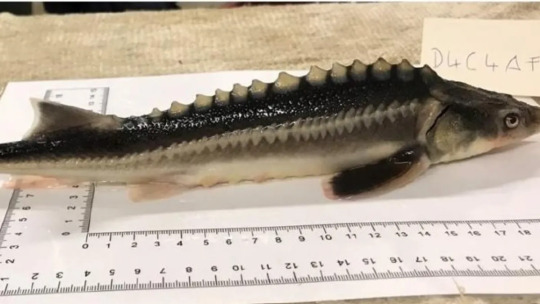
ITS CALLED THE STURDDLEFISH
ITS A HYBRID OF THE AMERICAN PADDLEFISH AND RUSSIAN STURGEON
SCIENTISTS MADE IT AFTER TRYNA DO SOME GYNOGENESIS SHIT
AND THEY USED THE PADDLEFISH CUM ON THE STURGEON EGGS ON ACCIDENT
AND THE SHIT WORKED
I HAVE NOT BEEN HAPPIER IN MY LIFE
260 notes
·
View notes
Text

Just been out here filter-feeding since the Cretaceous...
American Paddlefish (Polyodon spathula)
Mississippi River basin, USA
Status: Vulnerable
Threats: overfishing, pollution, habitat destruction, poaching for caviar
----
Having some bad days, I will post when I can. 👍🏼
15 notes
·
View notes